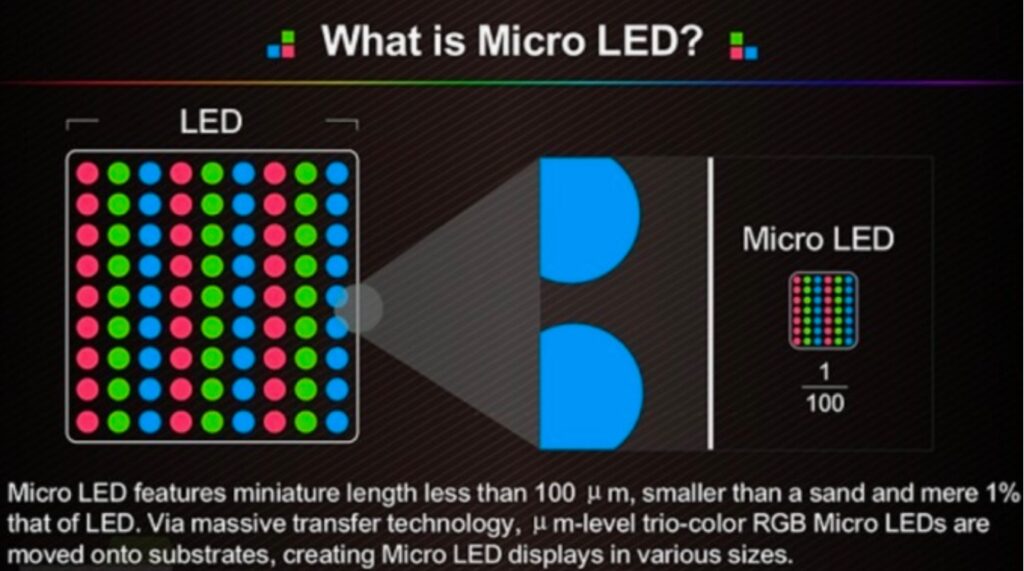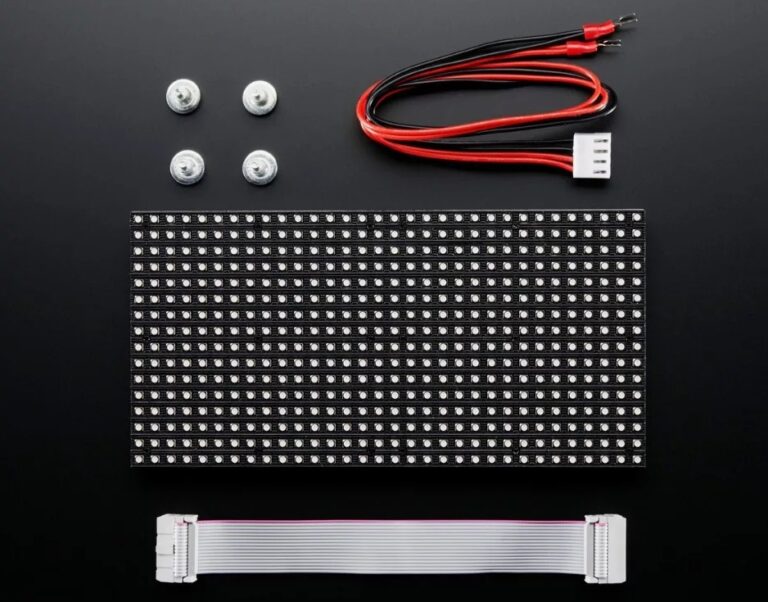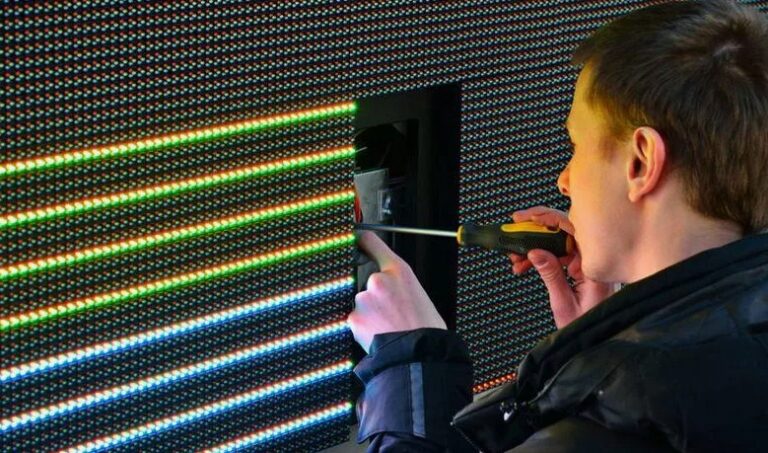Micro LED technology, as an emerging display technology, has garnered widespread attention. Its unique advantages and challenging drawbacks are worth exploring in-depth. In this article, we will comprehensively analyze the pros and cons of Micro LED technology to help you better understand its characteristics.

Advantages:
- Excellent Contrast and Brightness: Micro LED displays are composed of millions of tiny LED pixels, each of which can be individually controlled. This self-emitting feature gives Micro LED outstanding contrast and brightness, allowing for true black levels, resulting in clearer and more vivid images. How to adjust the brightness and contrast of LED display?
- High Refresh Rate and Fast Response: Due to the fast response speed of Micro LED pixels, Micro LED displays have high refresh rates and quick response times. This effectively reduces motion blur and ghosting, providing a smoother experience for viewing dynamic content. Introduce the working principle of LED lamp beads.
- Long Lifespan and Durability: Micro LEDs use solid-state light-emitting devices, which offer a longer lifespan and better durability. Compared to traditional LCDs and OLED displays, Micro LED displays are less prone to image retention and screen aging, providing consistently high-quality display performance. What is the difference between LED and LCD panels?
- Flexibility and Modular Design: Micro LED technology allows for flexible modular designs, enabling displays to be assembled and combined as needed. This adaptability makes them suitable for various sizes and shapes of display scenarios, offering users more diverse application choices.
- Wide Viewing Angle: Micro LED displays have a nearly 180-degree wide viewing angle, maintaining color and contrast consistency even when viewed from extreme angles.
- Low Power Consumption: Since Micro LED pixels can be completely turned off when not emitting light, Micro LED display technology offers lower power consumption compared to traditional LCD screens. This is especially advantageous for mobile devices and displays that need to run for extended periods.

Disadvantages:
- High Cost: The primary limitation of Micro LED displays currently is their high production cost, which includes the manufacturing, transfer, and packaging processes of LED chips. Here is the price range of commercial LED display.
- Manufacturing Challenges: The production process of Micro LED displays requires extremely high precision, especially in transferring tiny LED chips onto the substrate. The technical challenges and costs increase with the size of the display.
- Complexity of Full-Color Displays: Achieving full-color displays in Micro LED technology requires complex chip design and precise control to ensure the uniform mixing of red, green, and blue LEDs.
- Burn-In Risk: Despite the longer lifespan of Micro LEDs, there is still a risk of burn-in, particularly when displaying static images for extended periods under high brightness.
- Repair Difficulty: Since Micro LED displays are composed of millions of individual pixels, if a malfunction occurs, the difficulty and cost of repairing or replacing a single pixel are relatively high.

In summary, Micro LED technology boasts excellent display performance and application flexibility. However, it also faces challenges such as high manufacturing costs, technical difficulties, and production challenges. As the technology continues to develop and mature, it is expected that these issues will gradually be resolved, leading to broader applications and advancements for Micro LED technology in the future.





